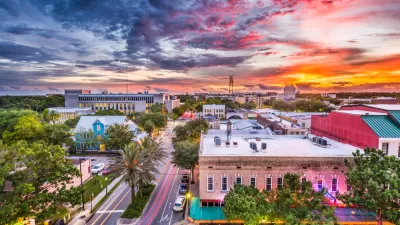Inclusionary zoning requires new developments to include affordable units, but many cities allow developers to bypass this by paying an off-site fee. Is the fee-out option getting unfairly demonized?

The question of integrating affordable housing units required by inclusionary zoning on-site versus allowing developers to pay a fee to locate them off-site has long been a contentious one. In this Q&A, Sam Moss, executive director of the Mission Housing Development Corporation in San Francisco, explains why he thinks that the fee-out option is unfairly demonized.
Miriam Axel-Lute: Last year on social media you posted saying something to the effect of, “Hey, look: everybody talks about on-site units as the holy grail of inclusionary zoning, but I think off-site fees are actually better.” Why do you think people go for the on-site units, and why do you think that off-site is better?
Sam Moss: If a developer chooses to fee out, [and if that fee is] properly disseminated to nonprofit affordable housing developers through something like a housing trust fund or an affordable housing fund, that is the most efficient, most valuable use of the fee. Building on-site is supported by a lot of people, mainly because of how long it takes to build the 100 percent–affordable projects. It can take years longer than the market-rate project that produced the fee. There is something to be said for getting below-market-rate units built at the exact same time as the market-rate development.
But at the end of the day, using the fees on affordable housing nonprofits leverages each dollar into $3 or so, because of tax credits and bonds and things like that. I believe that’s the most valuable use.
[Why do I think that off-site is] better? I don’t know that it’s necessarily better. [But] I am disappointed and frustrated over the demonizing of the fee-out option. I can see why people would just default to demanding on-site, but I do still believe that the most valuable, efficient use of the funds is to allow a nonprofit developer to utilize the fee.
Miriam Axel-Lute: So you’re saying more units would be built using the fee-out option?
Yes, because the nonprofit can leverage the fee dollars with other sources of funding, you essentially get more units. So, for every dollar that the market-rate developer would have spent building units on-site, that same amount of money can be utilized to, in some cases, triple the amount of overall funding that’s available for the affordable units, and thus build more units.
Miriam Axel-Lute: One of the reasons people like on-site is it can be a way to force affordable units into areas that would put up a NIMBY fight against a totally affordable development. How would you respond to this?
...
FULL STORY: The Case for Letting Developers Pay Not Build

Planetizen Federal Action Tracker
A weekly monitor of how Trump’s orders and actions are impacting planners and planning in America.

Congressman Proposes Bill to Rename DC Metro “Trump Train”
The Make Autorail Great Again Act would withhold federal funding to the system until the Washington Metropolitan Area Transit Authority (WMATA), rebrands as the Washington Metropolitan Authority for Greater Access (WMAGA).

DARTSpace Platform Streamlines Dallas TOD Application Process
The Dallas transit agency hopes a shorter permitting timeline will boost transit-oriented development around rail stations.

Parks: Essential Community Infrastructure — and a Smart Investment
Even during times of budget constraint, continued investment in parks is critical, as they provide proven benefits to public health, safety, climate resilience, and community well-being — particularly for under-resourced communities.

Porches, Pets, and the People We Grow Old With
Neighborhood connections and animal companions matter to aging with dignity, and how we build can support them. Here’s a human-scale proposal for aging in place.

Single-Stair Design Contest Envisions Human-Scale Buildings
Single-stair building construction is having a resurgence in the United States, where, for the last several decades, zoning codes have required more than one staircase in multi-story housing developments.
Urban Design for Planners 1: Software Tools
This six-course series explores essential urban design concepts using open source software and equips planners with the tools they need to participate fully in the urban design process.
Planning for Universal Design
Learn the tools for implementing Universal Design in planning regulations.
City of Charlotte
Municipality of Princeton
City of Camden Redevelopment Agency
City of Astoria
Transportation Research & Education Center (TREC) at Portland State University
US High Speed Rail Association
City of Camden Redevelopment Agency
Municipality of Princeton (NJ)




























